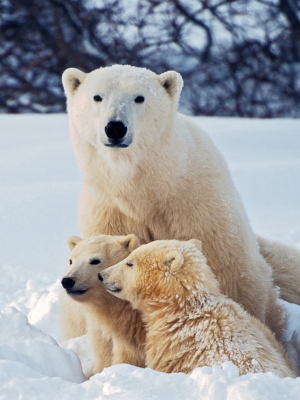Our dedicated team works hard every day to care for the more than 200 monkey residents who call our 175-acre south Texas primate sanctuary home. But it is not just monkeys our staff needs to think about as they go about their daily work. There are countless other species who also make their home on our site and we take our responsibility for their protection as seriously as that of the monkeys.
Peaceful coexistence with wildlife is at the very heart of Born Free’s work, and it is important to us to lead by example. As we launch a new series of coexistence resources, which seek to guide people on the path to humanely managing our interactions with wildlife, below are just some ways that we deliver that same mission on our own land.
Our overriding approach to living alongside wildlife is giving them space to be themselves. For some animals, special measures have to be taken to protect human caregivers and monkey residents. Find out below how we tackle coexistence challenges:
Snakes
With a number of venomous snake species native to south Texas – and rattlesnakes in particular – these animals can pose an immediate and serious risk to both animals and humans. While many venomous snakes are killed on sight in other places across the country, our team is trained to carry out humane relocation when we encounter them in areas where they pose a threat. Carefully using snake tongs – an implement that looks very similar to a trash picker – rattlesnakes are gently transferred to a large trash can. They are then driven to a part of our site where they can be safely released, well away from monkey and human infrastructure.
Non-venomous snakes are admired quietly from a distance and allowed to go on their way.
Raccoons
Raccoons are opportunists and very well adapted to living in a range of different environments. Nowhere better than a large wildlife sanctuary where there is endless potential to find yummy food, fun trash to rummage through, and general shenanigans to be had, safe from harm!
Keeping our trash containers firmly closed with locks or other closures helps to ensure raccoons don’t get into the garbage. Keeping areas around enclosures where the monkeys may have dropped food clean is also important to stop raccoons from scavenging for scraps. Adding harmless but effective deterrents like “hotwires” around the tops of enclosure fencing also serves to keep curious raccoons out of the monkeys’ living spaces and prevents monkey-raccoon conflict, too!
We ensure that roofs and crawl spaces in human areas are monitored for holes to ensure that our furry friends don’t make their nests there. If determined raccoons still manage to get in, we humanely trap them and move them to an area of our site without existing occupants.
Coyotes
These beautiful, elusive predators are native to the area where our sanctuary is located. We keep our monkeys safe from potential harm by ensuring that their enclosure fences are kept carefully maintained and secure. Regular checks are made to ensure that any potential breaches are found and repaired before they become a problem. This helps keep the monkeys safe from any outside harm and, of course, keeps our residents safely contained.
Other Wildlife
Our general rule with wildlife, with the exception of those who might cause harm to our staff or residents, is to look but don’t touch. They were here first, and it is our responsibility to respect their right to exist and thrive without undue interference.
So, whether it is a skunk we find nestled in a warm nest of hay, an opossum and her babies making their way across our site, a rat snake sunning themselves on a summers’ day, or this mischievous “trash pandas” making their presence known, we do all we can to ensure both their safety, and ours.
Keep Wildlife in the Wild,
Liz
Dear Reader,
We are a nonprofit committed to wildlife conservation, welfare, and rescue. Making resources free and widely distributed, like our news items, is an important part of our mission. If you found this article helpful, enjoyable, or enlightening, please donate to help keep these resources available, and Keep Wildlife In The Wild.
Thank You,
The Born Free USA Team

 Dear Reader,
Dear Reader,